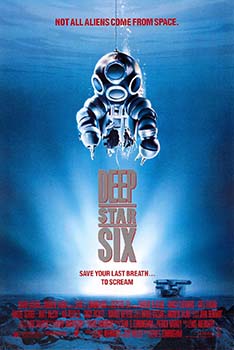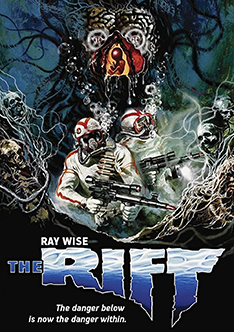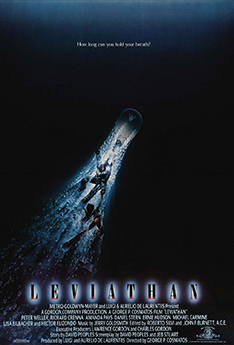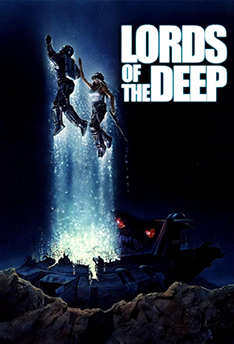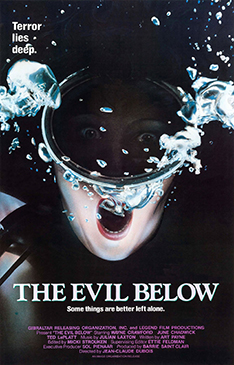Doom Shanty
The Terror Tourist is my occasional segment on the Heavy Leather Horror Show, a weekly podcast about all things horror out of Salem, Massachusetts. These segments are also available as an email newsletter. Sign up here, if interested.
Welcome back to The Terror Tourist. This week our journey leads straight under the waves. We don’t have a map since only about 25% of the sea floor has been mapped in detail — and we’re not going anywhere near those places anyway. We’re headed to maria incognita in this segment called “Doom Shanty”.
Here’s a great word for you: Thalassophobia [noun]: the persistent and intense fear of deep bodies of water, such as the ocean, seas, or lakes. Not to be confused with aquaphobia, which is classified as the fear of water itself. Thalassophobia can include fears of being in deep bodies of water, the vastness of the sea, sea waves, aquatic animals, and great distance from land.
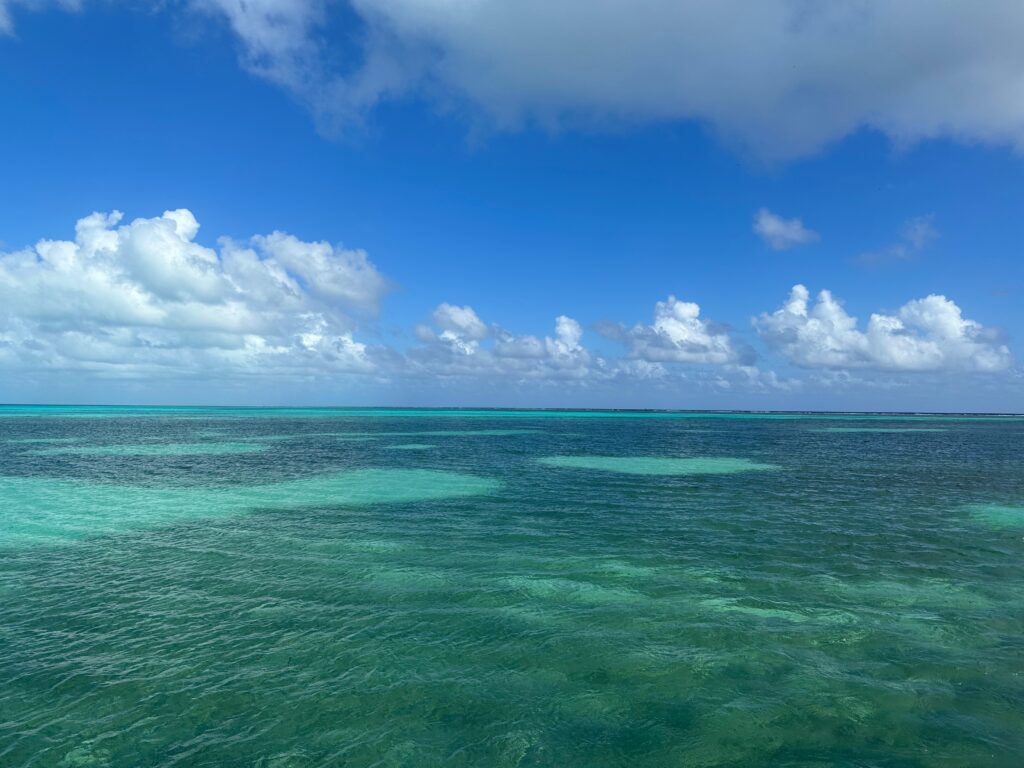
But water aside, what’s to fear? Well, here is a non-exhaustive list of all the different ways to die underwater:
Attacked by a shark. Does it happen? Yes. About 80 times per year. Only three species really account for these attacks — Great White, Tiger, and Bull sharks — and usually it’s a case of mistaken identity. Stop swimming like a seal or with actively bleeding wounds and you’ll be fine. For comparison, humans kill approximately 80 million sharks per year. So the ratio is, you know, lopsided.
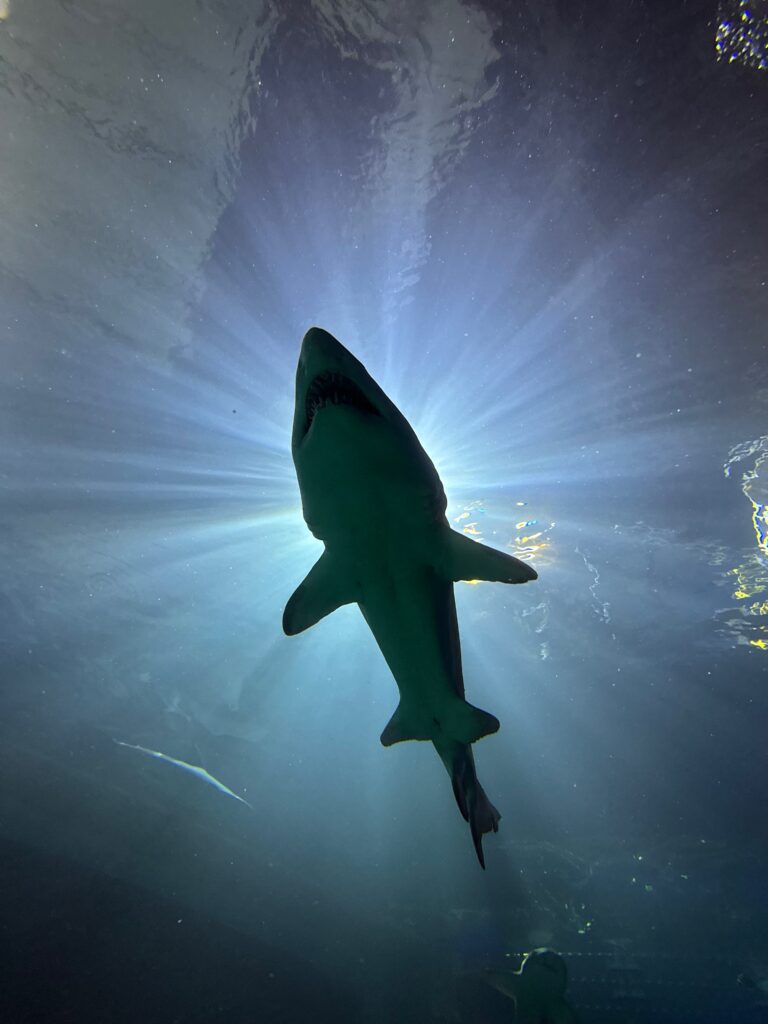
Swallowed by a whale. This has happened as recently as 2021 off of Cape Cod. Usually when this happens, it’s a brief, accidental gulping-down of plankton and whatever else — like a hapless human — happens to be in the water. And then a big ol’ regurgitation. But it does happen. Note for book-lovers: Whalefall by Daniel Kraus takes the concept of interior monologue to horrific depths.
Cephalopod attack! Lotta creatures in this category, but mostly we’re looking at giant octopus and squid. Obviously the tentacles are an issue, but so is the very hard and pointy beak. Also, all octopuses are venomous, though almost none can deliver a fatal dose to humans. Except the greater blue-ringed octopus whose venom in one dose can kill 10 people. (So … don’t touch that one.) For what it’s worth, cephalopod attacks are extremely rare. But you gotta admit that going down in a writing mass of tentacles, while being stabbed by a beak, and filling with poison — oh, also while drowning — seems a terrible way meet Davy Jones.
Speaking of poison, there’s a lot of it under the waves. Basically every category of critter — from invertebrate slime to complex things with backbones — has some member of its class that stings with the nasty juice or which simply cannot be touched because they’re covered in it. (Terminological note: venom is injected; poison is ingested.) Stung by a box jellyfish? Hope your affairs are in order. Walking in tidal pools without foot protection and whoops! that wasn’t a rock it was a stonefish. You’re an idiot and also in for the worst pain imaginable, possibly death if you’re not near help. There are sea snakes, pufferfish, even snails whose toxins will kill you. Oh and the lionfish? That bugger found all throughout the Caribbean because someone no longer wanted it as a pet decades ago? Invasive and venomous. (I blame the first Naked Gun movie.) Even the pretty things that can’t move at all — like coral — are full of nasty. Many coral contain palytoxin, the second most poisonous substance on the planet. Palytoxin kills by way of rhabdomyolysis which is the process by which your muscles literally disintegrate into your bloodstream. You basically melt into yourself. So be on the safe side and don’t inhale or ingest coral.
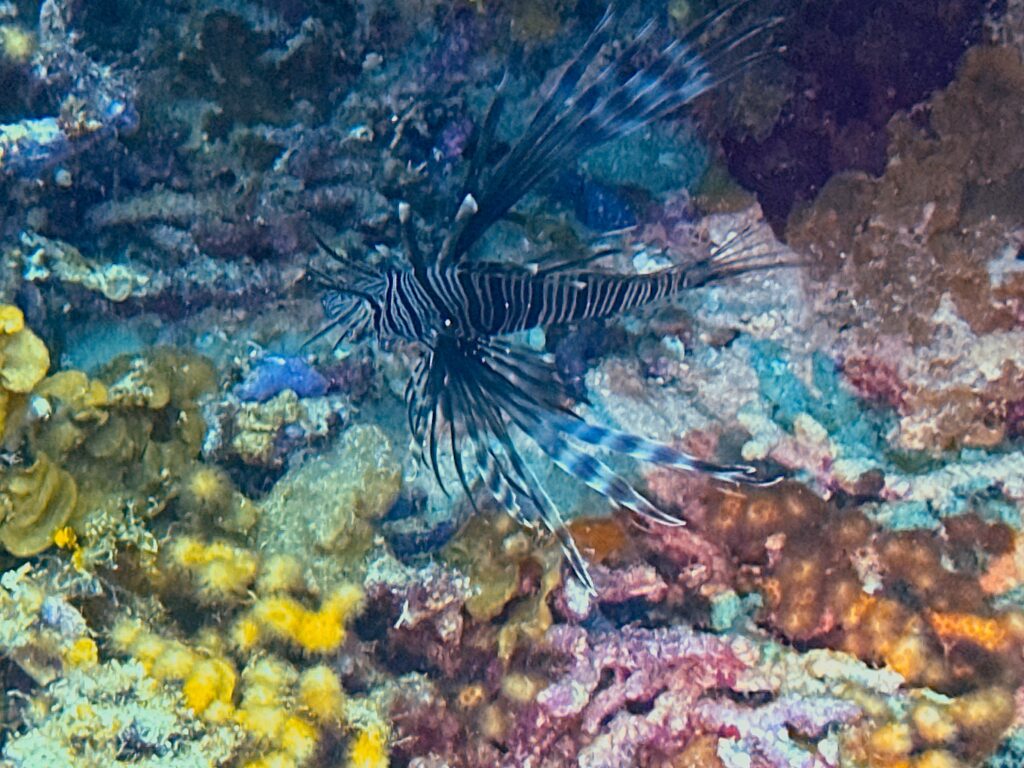
OK those are all ways to die from being attacked. But what about just being in the water in a human body that long ago evolved away from being able to live in water?
Of course you can be stranded where, eventually, you will tire to the point that you can’t stay afloat. Likely you’ll succumb to dehydration or hypothermia — much worse ways to go — before this happens since the human meatbag itself is positively buoyant even if you’re exhausted.
Let’s not forget air embolism, which is why you never hold your breath when ascending from depth (whether you’re snorkeling, scuba diving, or whatever). For every 33 feet you go underwater the pressure on your body (and lungs) increases by one sea level air pressure. And the reverse is true when you ascend. So if you hold your breath while coming up the air in your lungs will expand sorta like hot air balloons that expand as they go up into less dense air. This is a problem as it can rupture your lungs, especially if they were already “full” down deep in high pressure. Explosive decompression of lungs is bad, I think we can all agree. But it’s worse: the body keeps air in all kinds of places — the eye balls, the ears — those will explode too.
Then there are the bends — also known as decompression sickness. This is related to air embolism except in this case the rapid ascent makes nitrogen gas in your blood expand rapidly into bubbles. Those bubbles can go anywhere in the body but often settle in the joints causing people to bend over in excruciating pain. You can die from the bends or be permanently impaired. It can be cured though, if you’re close enough to a hyperbaric chamber — which is a whole different kind of misery. There is also in-water recompression if you’re too far away from help. But this requires going back underwater to depth while you are in excruciating pain. And often doesn’t work.
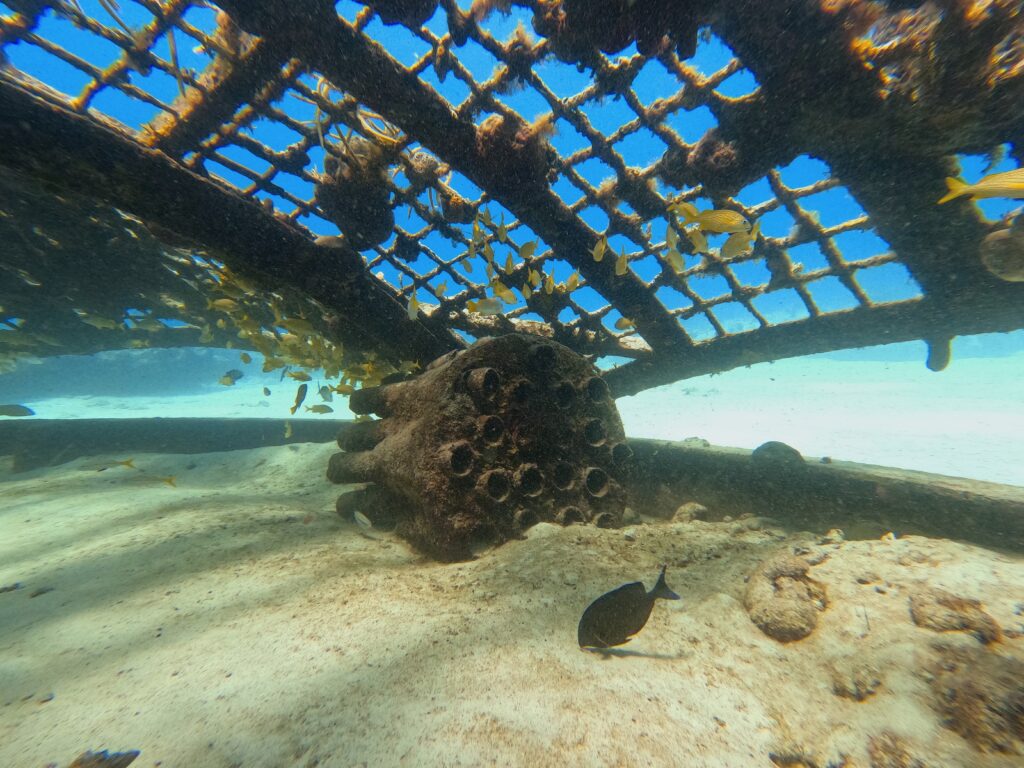
If you’ve seen the end of the movie 47 Meters Down you are familiar with nitrogen narcosis. Simply put, the way our bodies react to otherwise harmless gases at sea level can be very different to those gases under pressure. In this case nitrogen at depths over 100 feet causes an anesthetic, sometimes delirious change in consciousness. That in itself is not a problem, if you recognize it. The issue is that being nitrogen drunk can cause you to lose track of time, air availability, where you are, who you are, etc. The good news: all you need to do to get sober is ascend a little bit. A great device for screenwriters!
Speaking of gases, guess what becomes literal poison is you inhale too much of it? Oxygen! The very thing that normally keeps us alive. The air we breathe on land is 21% oxygen but sometimes scuba divers bump that percentage up for all kinds reasons. Suck that down for too long and you can suffer convulsions and death. With oxygen, like water, it’s fine line between life-giving and life-taking.
Look, there are a zillion ways to die underwater. You could be boiled alive near a geothermal vent or poisoned by accidentally ingesting too much salt water. You and your flimsy tourist sub could be crushed by the incredible pressure way down deep. (Interestingly, physically the human body can go a lot deeper under pressure than you might think. As humans are mostly just squishy flesh and liquid it all compresses fairly well. The problem is the parts of our bodies that hold air. That stuff only compresses or expands so much before your insides look like they’ve been puree’d.)
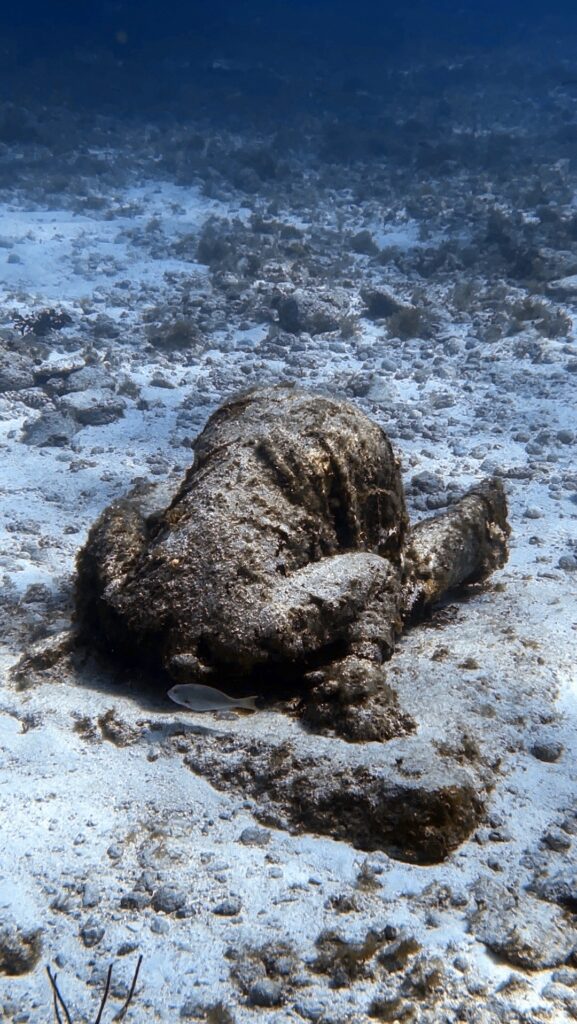
I’m often asked — sometimes by family members who I have forced to scuba dive with me — what’s the most scared I have ever been under the waves. It isn’t sharks. I have never encountered a shark that wanted anything to do with people. It isn’t equipment failure. There’s so much redundancy built-in, it’s just not an overwhelming concern. What has scared me, though, is solitude, the very few times I’ve lost track of my buddy or group. This is tough to do in the crystal waters of tropical reefs, but somehow I’ve done it. Only for a minute or two. But it is terrifying. There are procedures for locating other divers — e.g., look up, because everyone exhales and those long bubble ribbons can be seen from far away — but it is still heart-pounding. Much easier to lose people in murky water or cave systems. Which is why I don’t dive those without a really good reason.
Because of all this danger and unique ways to meet one’s end, there’s a long tradition of underwater horror in fiction. In film you can go back at least as far as 1955’s It Came from Beneath the Sea — probably further, though the technical challenges of filming underwater — hell, the technical challenges of breathing underwater — really only made using it as a film setting possible from the 1960’s onward.
Why do I love this sub-genre so dearly? Maybe because you don’t need much: simply, the environment surrounding you is a threat, an antagonist, a killer. Strictly speaking filmmakers don’t need a monster or a homicidal maniac or a ghost after their characters. The water itself wants you dead. There are a few films that go this route where this water vs. humans’ inability to live in it is the entire plot. See, for example, Open Water and its sequel. (This may also explain my fascination with space horror. The vacuum also wants you dead. More on that in a moment.)
Travelers, here I am mostly interested in movies that take place underwater. There are lots of ways to tell these stories, so here are some general categories organized by exposure where the majority of the movie takes place underwater as opposed to mostly on top of or near it.
- occasionally underwater (e.g., The Reef, The Shallows, Piranha, Jaws)
- mostly underwater (e.g., Deep Blue Sea, Sea Fever)
- underwater in a vessel/ship/outpost (e.g. No Way Up, Underwater, Below, The Poseidon Adventure)
- underwater only in self-contained breathing apparatus (these are very rare! e.g., The Deep House, 47 Meters Down)
- underwater supernatural (e.g. Aquaman, The Little Mermaid, no full-length horror movies of this type though there is the delightful non-sequitur of Fulci’s shark-fighting zombie)
One interesting question to ask when watching underwater horror is: if all this water were replaced by the void of outer space would anything be different? In general, if the answer is no you are watching not a great movie. If yes, then you are at least in store for water-based kills and other aspects of the marine environment that make it uniquely terrifying. Indeed many of the scripts for what became sea stories started as outer space stories. The conversion is not very difficult. Sometimes the film-viewing public seems to want stars and planets, but sometimes, like in 1989, they only want saltwater and sea bubbles.
Let’s backstroke a bit to the year 1989. Something was in the water, for sure. It’s been called the B-Movie Sea Monster Wars where we got at least six underwater horror flicks all in one year. What the hell? Why?
The public may have been primed for undersea tales of doom by the discovery of The Titanic in 1985 by Bob Ballard. That’s one theory. Hard to deny is that after Aliens in 1986 there was a surge in sci-fi movies centered around blue-collar workers finding themselves up against terrifying creatures, usually in a dark, dank, remote setting. Around 1987 everyone in Hollywood apparently that knew James Cameron, coming off of The Terminator and Aliens, was making an underwater flick, which would eventually be called The Abyss, for a summer release in ’89. It wasn’t initially known whether it would be horror like Aliens mostly was. Of course, The Abyss when released was straight sci-fi. But rival filmmakers couldn’t have known as they ramped up their efforts. So we got a lot of underwater horror in a single year that no one really asked for. Let’s swim on over to the films to wrap up this shanty!
DeepStar Six (Jan. 13, 1989)
This creature feature is basically a Friday the 13th reunion. Sean Cunningham, director of the original Friday directs here; Kane Holder, the Jason Voorhees in the later films is the stunt coordinator; even Ronn Carroll, who played the policeman at the very end of the first film is in this flick.
The story here is about to become familiar: a crew is stationed underwater — in this film it is a military installation installing nuclear missiles — when they encounter something nasty. In this case it’s a creature of unknown, possibly alien original.
The character of Snyder played by Miguel Ferrer is a likable horrible person. He tells the ship’s computer that they are under attack at which point the military-minded computer suggests a nuclear counterattack, which Snyder does. This only serves to basically ruin the station with a shockwave. Snyder eventually meets his end by trying to escape in a pod that somehow is not pressurized. He explodes on ascent.
The creature design here is very practical, cool, and gross. And unlike many of the films of 1989 it actually does feel like the setting is on an undersea station rather than a soundstage. Lest you have forgotten its Friday the 13th connections the conclusion of DeepStar Six is a strikingly similar shock ending to that film, which also involved water.
The Rift (aka Endless Descent — March 1, 1989)
It’s possible the best thing about this film is its tagline: “YOU CAN’T HOLD YOUR BREATH & SCREAM AT THE SAME TIME”. And yet, this is not true, I scream underwater all the time.
The plot: an experimental sub is sent to find a lost experimental sub but in the process stumble upon a whole submarine laboratory devoted to genetic engineering experiments. R. Lee Emery (drill sergeant from Full Metal Jacket and later installments of the Texas Chainsaw Massacre franchise) is the stand-out here, though his ability to ad lib demoralizing insults is underused.
There are some underwater sequences outside the sub, though it is clear the budget demanded that they find an air-filled cave several miles under the sea where they could film more normal walking-around scenes on a dry set. All effects in The Rift are models and practical, though literally nothing would suggest they were on a submarine — almost as though they were going for a 1950s sci-fi look.
One thing that made me chuckle is that the filmmakers basically avoided the problem of dialogue when underwater. Everyone talks to each other normally with regulators in their mouths. OK. It’s almost like the filmmakers didn’t even care that the story was supposed to be underwater. Like, how is there a lidless aquarium on a submarine? How are people still breathing after a massive, fiery explosion in an underwater cave?
Leviathan (March 17, 1989)
The Rift was released two weeks before our next film, Leviathan, and was also produced by DeLaurentis. Leviathan’s budget: $30M. The Rift’s budget: a hell of a lot less. The plot is basically the same though. Do investors think “You know what, this is a good story, but I think it would do better with laughable production design” because that’s essentially what happened here. Or maybe it was a kind of A-B test: let’s see which film style audiences like more?
In any event Leviathan has a stellar cast: Peter Weller, Richard Crenna, Daniel Stern, Hector Elizondo, Ernie Hudson. But most importantly, Stan Winston and his team did the effects — and oh my did they. The genetically engineered creature is The Thing amped way up. It’s basically a slimy, clawed, tentacled mass of flesh that assimilates anything it comes in contact with. Just wonderful grotesque body horror. Also of note are the deep sea mining scuba suits, which are used to fun dramatic effect. We can thank Winston for these as well.
If you see only one of these six movies Leviathan should be it.
Lords of the Deep (April 21, 1989)
This film produced by Roger Corman could easily have been made in 1973, aesthetically. There’s a definite Space: 1999 vibe here. Here’s the thing: this isn’t a well-made movie, but it is a well-done movie. If shlock isn’t your thing may I suggest you watch this via Mystery Science Theater 3000 which did a hilarious job annotating it in season 12?
Hard really to know what’s going on here. There’s alien goo and impending global natural catastrophe (as the opening crawl tells us “In the year 2020 – Man has used up and destroyed most of the Earth’s resources.”) Also there’s a homicidal computer, ala HAL, and an insane station commander.
You might enjoy the earnest overreacting of Priscilla Barnes from late era Three’s Company. Or you might enough the truly laughable puppetry of the creature. Or you might not. One thing is for sure when it is all over you will still not be sure who the lords of the deep are.
Alien from the Abyss (May 27, 1989 — aka Alien from the Deep)
Never count out the Italians when there is a horror film trend to be capitalized upon. This was one of the last films in the storied career of Antonio Margheriti who brought us Castle of Blood and Cannibal Apocalypse, among other gems.
The story here follows a Greenpeace camera crew investigating a volcano where the military is dumping radioactive waste. It’s basically one extended jungle chase sequence. Lots of snakes. So much so that it doesn’t go underwater until more than halfway through the film and even then not for long.
You may be thinking radioactive waste dumped into a volcano — this is a 1950’s-esque mutant film right. Incorrect. The baddie here is an alien under the sea. Huh? I have no explanation, but there is great gore and the Kaiju-like creature is pretty great once we’re allowed to see more than its claw. The ending is ripped straight from Aliens as our Greenpeace activists do battle with front loader heavy machinery.
Honestly this was a pretty good film, even if it barely fits into any of our underwater horror categories.
The Evil Below (July 1, 1989)
This is also an Italian film, dubbed as horribly as you’ve comfortably come to love in giallo films.
The premise here is promising: a crew is searching for the shipwreck of El Diablo, a ship whose cargo included stolen religious artifacts. But also a curse! You see, this is a haunted shipwreck. There are underwater sequences, but they are so poorly shot it is nearly impossible to see much less figure out what’s happening. I’m not sure what the evil was in The Evil Below, but it was below. So no misleading advertising here.
Here’s a handy reference chart for our journey through this unique moment in cinematic history:

Well, travelers, it’s time to surface. I hope you enjoyed our excursion under the waves. Let’s take this slowly and gently. Exhale on ascent. Don’t look down. Who knows what swimming up beneath us?
A full list of the movies mentioned above can be found at Letterboxd. Find out where to watch there.

